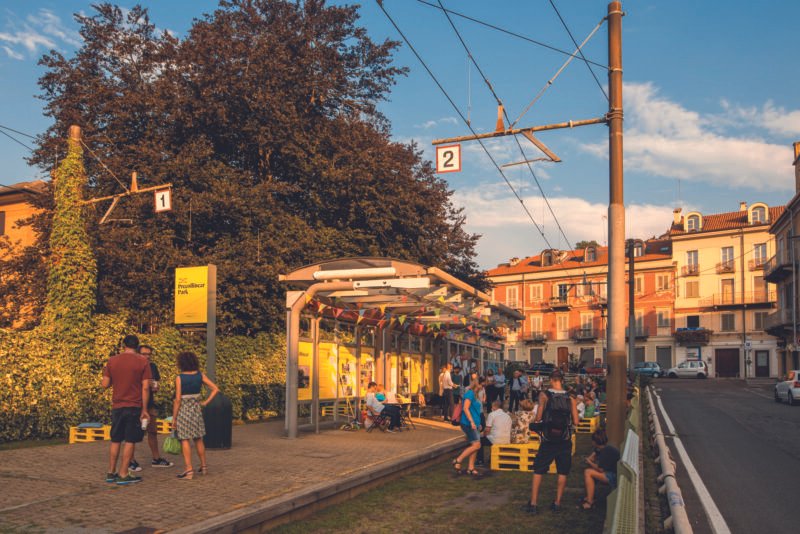Urban Nomads: Design For A Lifestyle On The Go
Since 2001 the German artist and designer Winfried Baumann has been exploring urban nomadism. In this 13-year period he has produced an incredible collection of small, flexible, and movable constructions that give shelter to urban nomads in the widest sense. Doing so he has created a powerful and influential statement about urban nomadism as an upcoming lifestyle. Baumann’s work is now collected in the beautiful book Urban Nomads.
Urban Nomads is the first book about an upcoming and hard-to-define new lifestyle. It sheds a light on possible new ways of living, working, cooking, and medical care in an age of increasing flexibility. The book is a huge catalogue of movable micro buildings and well-designed solutions for on-the-go living experiences, all based around themes like instant housing, instant cooking, instant exhibition, and instant help.

Although Baumann’s first inspiration to get into movable micro architecture came from the homeless, the scope his work has become much broader. The homeless, after all, are not the only category of urban nomads — the business men that spend most of their time waiting at airports are urban nomads. Or street vendors in cities like Hanoi and Bangkok, the cage people in Hong Kong, or urban campers that try to experience cities all over the world in a new way. All these groups share one main characteristic: their lifestyles are not concentrated on one location, they’re always on the road, and they need new concepts to live, rest and work in.

The H-3 Office, for instance, is a business survival kit in a flat suitcase on wheels, complete with light, solar panels, a desk and a sleeping bag. Another interesting model is the i-ex Plane Q, a portable sleeping cell that can be altered to a street vending cart with three extendable showcases and a room with first aid kit, mirror, window and bed. The I-C 1050 Combi is a nomadic mobile cooking and sleeping station that combines a fully equipped kitchen with a small sleeping space all packed together in a small transportable box on wheels.

WBF 240 Series
Many of the designs featured in the book are for multi-purpose use, depending on the circumstances of the user. The H-4 Cabin TR5, for instance, can function as a small office on wheels with satellite connection and all ‘up-to-date’ communication technology on board, but also as a two-story bedroom.

IH Cageman 1800 HKS
From the start Baumann has not depicted the urban nomads as poor people with no future. All his designs are modern, neat and clean — almost clinical. The names of his projects, such as ‘i-ex Plane Q’ and ‘IC 1050 Combi’, sound more like names for a series of new digital cameras than names for homeless shelters. Also the straight-forward studio photography that was used to shoot the projects insinuates that this is a luxury product for urban nomads and not just another funny design solution for the homeless.

IC 1050 Combi
The homeless and their living conditions, though, were the main source of inspiration for Baumann to start working on this theme. With his massive collection of designs for the homeless he has set a trend in design and architecture. The homeless are hot among artists and DIY urbanists as a new design target group. Over the last years we have seen a lot of projects that try to find artistic solutions for the conditions that the homeless live in. Baumann was one of the first to address this topic design-wise.

Rough Sleeper Collection (left) and IH Shopping Cart MIGROS (right)
Baumann sees himself as an artist in the first place, and he believes that art isn’t meant to solve problems. With his work he wants to make a statement about the way homeless have to live and are perceived in modern urban society. Some of his products are actually being used nonetheless — not only by some homeless communities to which the artist has reached out to test his concepts, but also by other groups of users. Photos of those situations are collected in the back of the book.
Urban Nomads
Winfried Baumann
Published by Hirmer Verlag, Munich
Release Date: 2013
27 x 24 cm
360 pages, full color, soft-cover
Language: German and English
ISBN: 978-3-7774-2218-3



